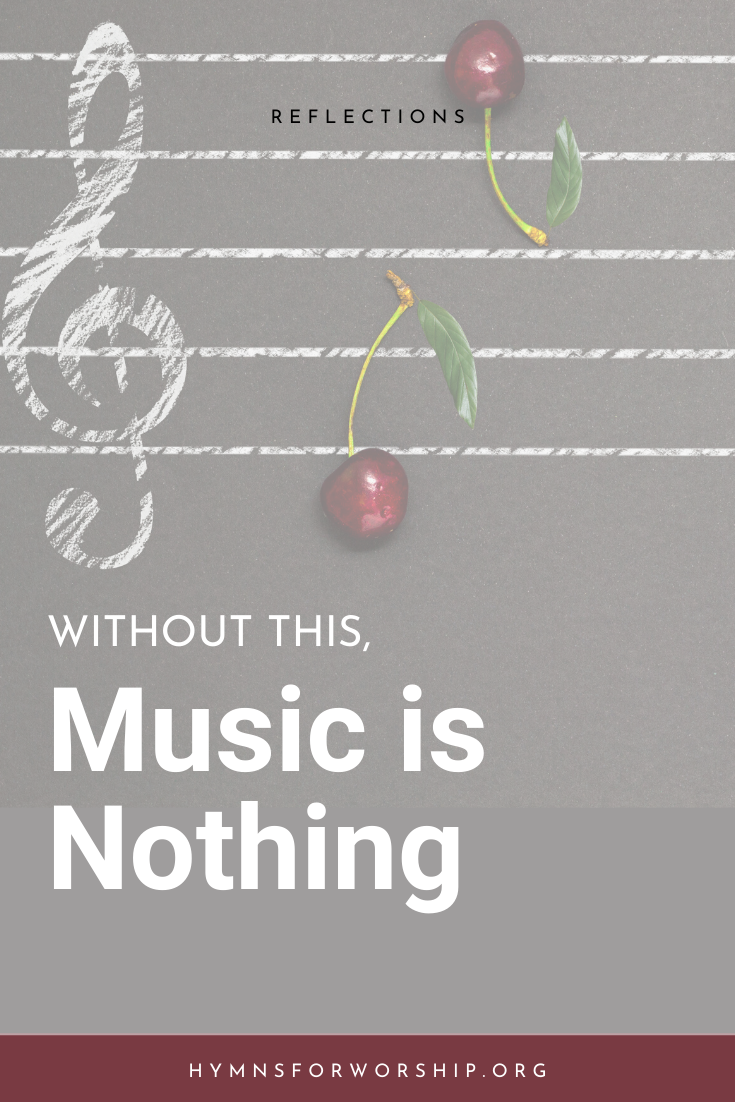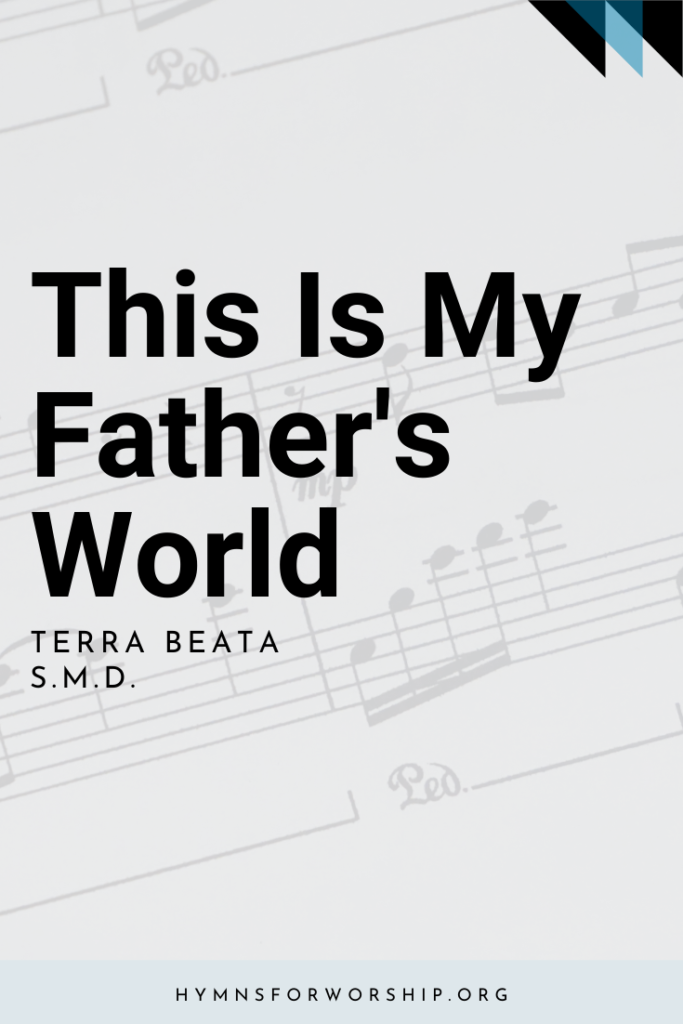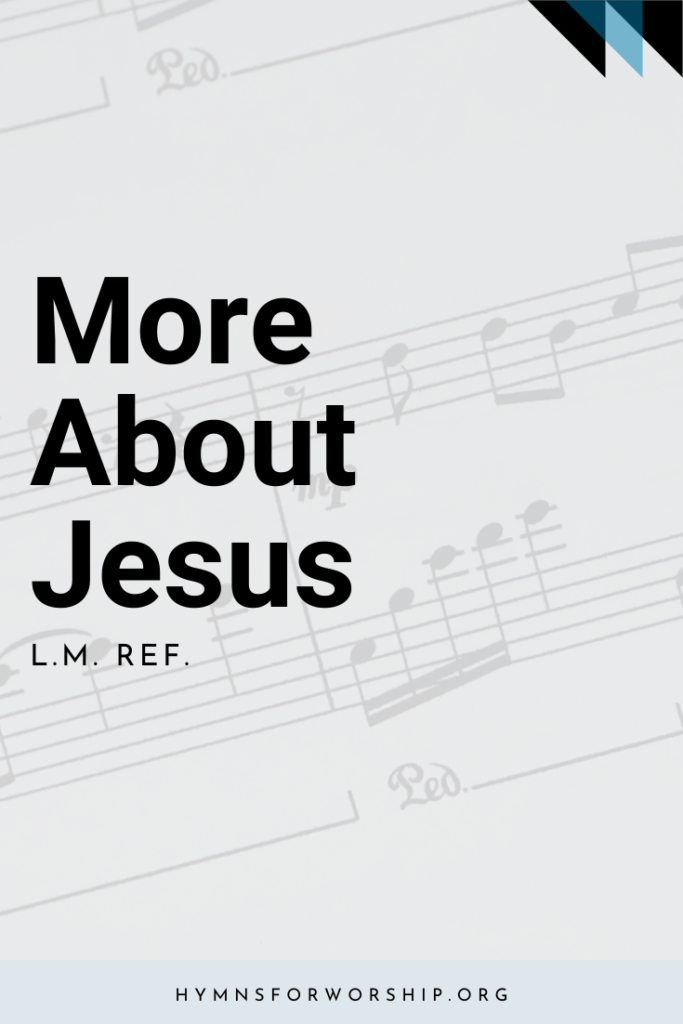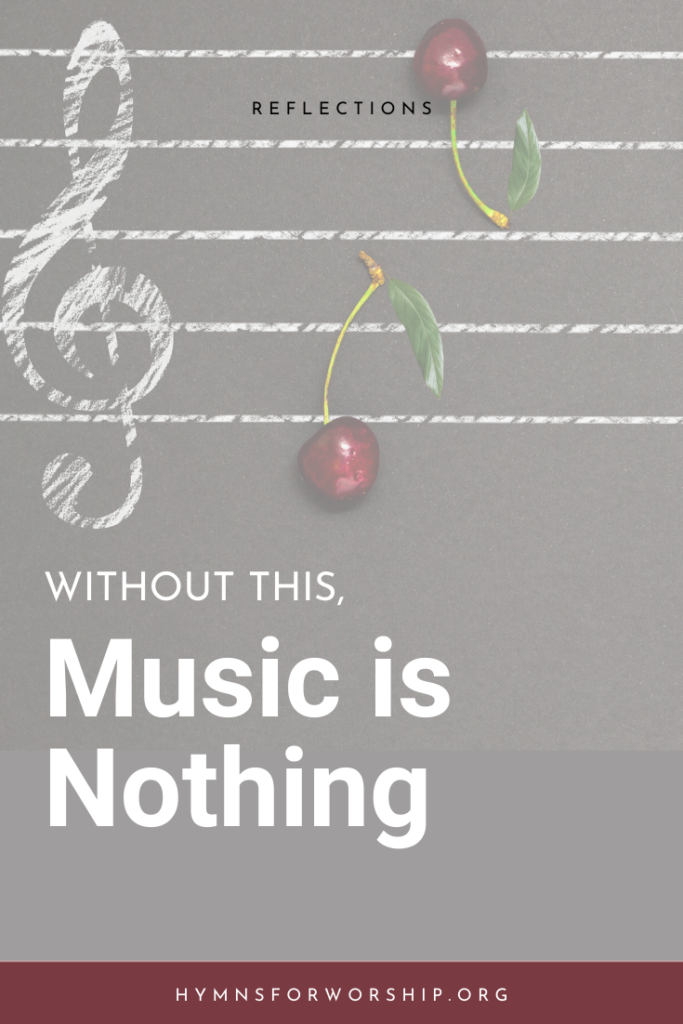
Praise the Lord. Give glory to God. Make melody to God in your hearts. Talk of the truth. Talk of the Christian’s hope, the Christian’s heaven. Evangelism, 630.
Melody is the essence of music.
Music is basically made of melody and rhythm. Harmony, timbre and texture makes it richer, tempo makes it faster or slower, volume makes it louder or softer, and more.
I couldn’t agree more when Mozart wrote that “melody is the essence of music.” Truly, in its most basic and purest form, music does not exist without melody.
Let’s test it.
If I were to ask you to hum your favorite symphonic work, or your favorite song. What would you hum?
I’m guessing you had trouble humming all the harmony, doublings, foreground, middleground, and background. Makes sense as you only have one voice.
Here’s the truth.
The melody is the tune most people remember a song by. It is the voice or the main line of a piece of music.
And if you were to write it on paper, you would see the notes are arranged in a linear manner, horizontally.
But to qualify as melody, the notes has to be organized in a way that sounds pleasing, inspiring and memorable.
Sounds easy? Maybe not.
Many composers agonize for weeks, months or even years to compose the perfect melody. Beethoven is known to have spent about a year mulling over and rewriting the Ninth Symphony. Many of his sketchbooks reveal that he labored profoundly trying to come up with great tunes. And this is Beethoven, folks. I know, right? Andrew Lloyd Weber also admitted that it takes him a lot of time to craft the perfect-sounding melodies.
Of the difficulty in writing melodies, these people said:
It is the melody which is the charm of music, and it is that which is most difficult to produce. The invention of a fine melody is a work of genius.
Franz Joseph Haydn, 17th century composer
The way notes are organized into a meaningful and beautiful continuous line — a melody — is one of the most difficult challenges for the composer.
Lilianne Doukhan
On the other hand, others get it within a matter of days, hours, or even minutes. Handel took 24 days to finish the whole Messiah. And Mozart? Well, he is a genius at writing melodies and was known to write melodies at sudden bursts of inspiration.
No matter how much or less a composer spends time in perfecting a good melody, it only lends to the fact that melody has standards and cannot just be carelessly written.
After all, at the end of a performance, it is the melody that we take home. Whenever we listen to a song or an instrumental music played in church, in a park, or even in a bus, it’s the melody that continues to stick and linger in our hearts.
It may not be the only thing, but somehow melody is one of the key elements of music where the brain easily latches itself on.
So the question you might be asking now then is, Ok, Irene, now I know what it is. But how do I know if I’m listening to a good melody? Well, here’s some tips.
Key Characteristics of a Good Melody
It has to have a well-shaped contour.
A good melodic contour sees a balance of rises and falls. It moves in ways that is interesting, but keeping an overall sense of shape and design. The notes move mainly in steps, with occasional leaps.
So tell me, which examples below have a good contour? By the way, the yellow lines are a result of my poor attempt to show the direction at which the melody rises and falls.
Example 1

Example 2
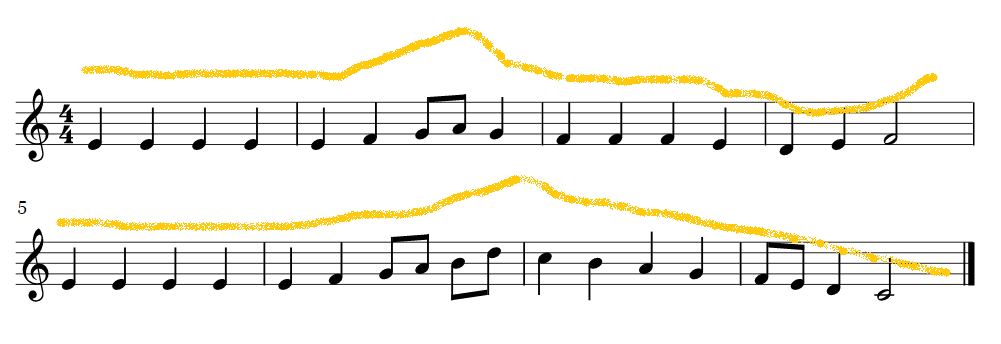
It should be within good range.
The beauty of instruments is that it can lend a much broader range than the human voice. You have wider space to run wild and still sound good. However, when it comes to vocal music, the melody should be within reasonable range to be singable.
It used to be that the composer would sing with the performer in mind. Compositions were crafted based on the talent and range of the singer. Later on, the musician began to see that his craft is art and does not need to be limited by what a performer can and can’t do. Composers started writing in whatever way they want, and the singer would have to follow suit.
For a melody to last long, it has to be within the singing range of a human being, or at least on a pitch that a human ear can perceive.Because not everyone can sing like this… (If you listen long enough, she comes to a point where she reaches Ab6)
It should be based on some sort of scale.
The scale on which a melody is based from lends it its flavor. Diatonic scales are where most Western melodies come from.
Base a melody off of pentatonic or whole tone scales and it would give the song an Arabic or Asian vibe.
It makes use of repetition and variety judiciously
Melodies without a sense of pattern can be quite unnerving. Familiarity is a good friend when it comes to crafting a good melody. I mean, there’s a reason why the stanza-refrain form of song has been with us ever since from the beginning. Repetition is key if you want melodies to stick.
However, a great composer knows how to use repetition judiciously. They use a few notes from the theme (called a motif), and recycle that to create an entirely new melody but still sounding familiar. Even Mozart who created 5-10 pages of music repeated a lot of his melodies yet maintaining variety and interest in between.
It should challenge and satisfy
Every good joke has a punch line, every good story has a turning point and climax, and every good melody has a peak that heightens the listener’s curiosity and interest. Without it, the joke, the story and the melody would be bland and dull, and not worth your time (or dime) listening to.The other elements of music lend their own splash of color to make the music sound more interesting. But the climax of a melody is usually and literally its highest note.
And then for the whole experience to be satisfying, it should resolve. It “ends on a good note,” in other words, it ends where it is expected to be. If it does not, the resolution is not fully satisfying.
The art of writing melodies was supported by the Bible
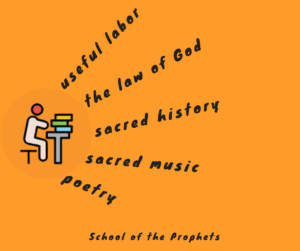
One of the major things Samuel accomplished in his lifetime was to establish the school of the prophets. If a young man wanted to seek deeper into the truths of God, and become a teacher in Israel, then the school can train him for such service.
Three things the school was able to accomplish, and that was “to serve as a barrier against the widespread corruption, to provide for the moral and spiritual welfare of the youth, and to promote the future prosperity of the nation by furnishing it with men qualified to act in the fear of God…” (Patriarchs and Prophets, 593.)
The students in the school of prophecy received training from God through useful labor, study of God’s law, sacred history, sacred music and poetry. In fact, the account continues that the “art of sacred melody was diligently cultivated.”
It was important for the students to master this art for many times, the prophets prophesied in song. Saul, right after being anointed by Samuel joined the prophets in prophesying and singing. (1 Sam 10:5-11)
At this school, composing was not an extra-curricular, a minor subject, nor a hobby. It was a main subject used distinctly for God’s service. But mind you, they had high standards in music.
So is there such a thing then as sacred melody versus secular melody?
Melody is versatile, but it’s purpose and role is not.
The pitches that make up a melody does not lend itself to be sacred or secular. Like words that are formed because of an orderly sequencing of letters, it really is just a sequence of tones that go up and down. Because of that, it can easily accommodate any style, just like how letters can form good words and bad words.
I once heard a melody sung originally from an opera, borrowed and sung as a hymn in church, then recycled and revamped to be sung in a rock concert. Hence, it is not the melody that is the problem, but in most cases, the purpose as to what is was used for.
In this case, it was the same melody for different purposes.
As Adventists, we have clear guidance as to what the purpose of music should be. In fact this quote might already be too familiar with you.
Music was made to serve a holy purpose, to lift the thoughts to that which is pure, noble, and elevating, and to awaken in the soul devotion and gratitude to God.
Patriarchs and Prophets, 594
So while melodies might not lend themselves sacred or secular, the purpose for which we use them for is what really counts. We can unpack this idea a whole lot more, but for now at the foundational level of what we have talked about so far, the melody that should be written, listened to, played or sung should be good, should uplift our soul and bring us closer to God.
We are commanded by God to make melodies.
In Ephesians 5:18-19, Paul reminds us to use music as a means to encourage each other in the Lord. But more than the actual notes of music, the Lord is more concerned with what is really in our hearts. He is more glorified when we thankfully and sincerely obey His word. If our spirit is in harmony with His will, it is sweeter than any other melody sung.
Like this article? Share it!

